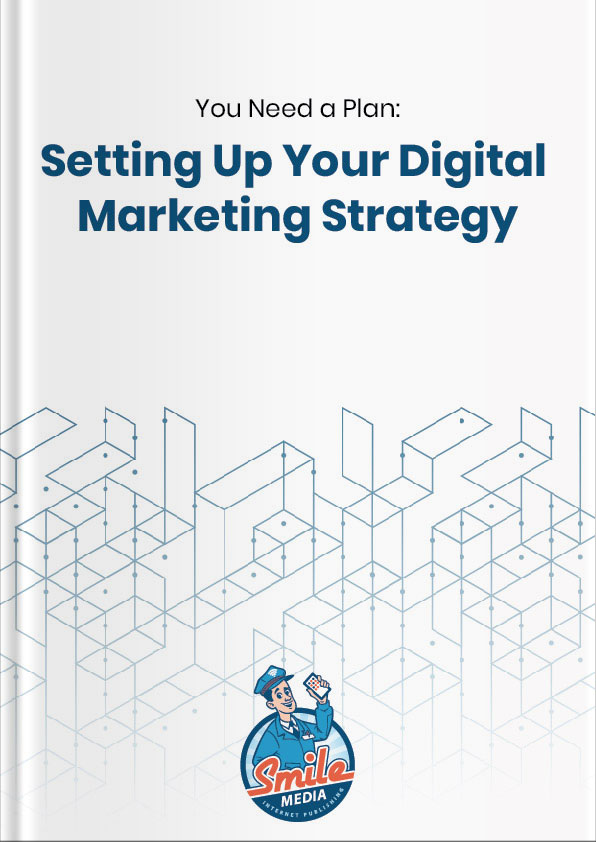Getting a bank loan is difficult nowadays. With the economic downturn, it’s almost guaranteed you’ll be denied even if you have a well thought out business plan. Now that it has become almost impossible to receive a loan, you should ask yourself, “how do I raise money for my business?” With that, in comes the crowdfunding platforms.
Any aspiring entrepreneur can start a campaign to earn money for developing their product, but what does it take to have a successful Kickstarter or Indiegogo campaign? Why should people invest in your business? Before we get into what mistakes to avoid when crowdfunding to start a business, let’s look at some advantages and disadvantages of crowdfunding.
Crowdfunding Advantages
Crowdfunding is revolutionizing how entrepreneurs introduce new products to the market. Crowdfunding platforms such as Kickstarter and Indiegogo have helped developing entrepreneurs to raise money, build brand awareness and have conversations about product updates with thousands of potential backers. For example, one of the greatest crowdfunded products of all time is the Coolest Cooler. At over $13 million dollars raised and over 62,000 backers, it exceeded the funding goal by 26,570 percent!
So how does crowdfunding influence innovation? According to MIT Sloan, a study involving 200 Kickstarter Alumni showed that collectively, they raised more than $17 million for their campaigns. The data combined showed them insights into how crowdfunding campaigns can help or hurt innovation endeavors. Though the primary crowdfunding goal is to raise money, successful campaigns offer more than financial benefits. Backers have provided valuable feedback and ideas to the originators of the product, on top of their funding.
Crowdfunding Disadvantages
As revolutionary and wonderful crowdfunding is, Kickstarter doesn't automatically market your campaign for you. It is up to you to do your market research and drive traffic to your Kickstarter page. Research from Northwestern University’s Segal Institute suggests that “campaign creators often find crowdfunding to be time-consuming and strenuous.” Building awareness and relationships with backers takes a great deal of time, and can be mind boggling to those new to the process.
On top of that, when the campaign is over and the manufacturing is all done, shipping to individual backers can make logistical headaches for entrepreneurs. There are much more people that donate smaller amounts of money, so sending out many little rewards is tedious.
Also, the investors are serious about the reward. As excellent of an idea the Coolest Cooler was, the maker Ryan Grepper failed to deliver the product and angered his investors. Grepper even had the audacity to launch another campaign, take more money, and not deliver the product he promised. The funding achievement this product received makes it the second most funded product on Kickstarter, but it is also the one that discourages many investors to this day. (The information above was gathered from an article titled, How Crowdfunding Influences Innovation, authored by Michael Stanko and David Henard of MIT Sloan, Business School of Management.)
It takes a little bit of extra TLC to run a successful campaign, gain the community’s trust and deliver a valued and reliable product to your backers. However, it’s much easier to receive smaller donations from hundreds or more of investors, than attempting to acquire a loan from the bank.
6 Mistakes Made When Crowdfunding
1. Not Putting the Investor First
“Me, Myself and I” is never a good marketing strategy to go by. To learn why, check out Dale Carnegie’s “How to Win Friends and Influence People.” It is still one of the greatest books to read, even though it came from the previous century. Read both new books and the old; one is silver the other is gold. Some information originating from nearly 100 years ago can still be relevant and useful today!
The investor doesn't care about your needs, only how your product improves their lives. You don’t walk into a restaurant and think “waiters/waitresses need my money so I’m going to spend it,” you go because you don’t want to take the time or effort to cook your own food (Carnegie; 1936). Another great example is the washing and drying machine; just pop your clothes in and go work or play while it does all the cleaning for you. Think about how your product improves someone else’s life, how it takes away time or effort, and capitalize on that improvement.
 2. Doing Little to No Research
2. Doing Little to No Research
Who are your competitors? Entrepreneurs get caught up in how great they think their product or app is and believe it should make money rain from the heavens. Let me tell you something -- if you don’t know how your competitors are marketing similar products or services, you’re not going to get anywhere. They will be seen before you, invested in before you, and likely finished and successful before you.
You should be getting ideas from their marketing campaigns and strategies. What makes them successful? Who do they outsource their work to? How and where are they advertising their products? If it’s not broken don’t fix it. If your competitors are making good money, they've already figured out what works; mimic and improve if possible.
3. Not Sharing Your Business Plan and Development Strategy
The Coolest raised a lot of money, but in the end, was a complete flop because of the failure to deliver. Going back over his Kickstarter page, all it really does is market the product in a way that makes the backer or buyer “look cool” to friends and family and a couple of 3D printed screen captures. They had a perfect marketing strategy, but not a product development plan or project timeline.
Their video doesn’t show or tell exactly who he is manufacturing the product with, either. Updates on the development or any awards, certifications or collaborative organizations are non-existent, sources that people rely on are thrown under the bus such as Forbes and NBC News. Everything keeps getting pushed back until eventually the backers just give up and never invest again. Be an entrepreneur, not a snake oil salesman.
A promising Kickstarter campaign, though it raised only $10 thousand over its goal, is the Nanofarm by Replantable. Alex Weiss and Ruwan Subasinghe have appeared to do everything right since the beginning of their campaign.
They tested and did their research, sent out a couple of Nanofarms to beta testers, improved the product based on their reviews, consulted with successful entrepreneurs in their area, have a sound project timeline (not just a ‘sometime at the end of 2017’), and even have a pie graph on where funds were allocated. Their main video features them physically inside the manufacturer’s warehouse going over the development costs, design and plan.
4. Not Using Social Media
There’s no place like Facebook *heels clicking*, there’s no place like Facebook! Seriously, you need to be active on all social media platforms, especially Facebook, to reach the most of your target market. It’s easier for people to follow Facebook pages over submitting their email to a bunch of individual websites for news updates. Though it’s important to update news on your site, your product will get more exposure on Facebook. However, just having a Facebook page for your business is not enough (Heimans, Timms; 2014).
Also, through some split testing, you can run ads on Facebook for your campaign and see which ones convert the most. In order to read detailed data like this, you need to set a tracking pixel on your Facebook campaigns.
5. Lacking Updates and Communication
You need to update your backers with news and events practically daily, sometimes twice or more a day depending on how your business grows. You wouldn’t invite someone you haven’t talked to in 10 years to your wedding; why should someone who hasn’t heard anything from you in 6 or more months be interested in what you’re selling? Your backers need to know what’s going on with you and your product; they want to know, and they’re invested in your dream, so share it with them! They’re excited about how your product can help them, and having a whole bunch of people amped up about your product should excite you and drive you to keep succeeding!
Nanofarm is constantly updating their Facebook page, and responds to emails quickly, within hours. According to Ruwan, one of the founders, the project timeline is still on course, production has already started. In fact, quoting a part of the email he sent, “Our promised delivery for Kickstarter backers is in October 2017, and since we're already in pilot production, I don't see any roadblocks to us meeting that delivery timeline.” This is the kind of communication backers are looking for.
6. Budgeting Poorly
There is nothing more troubling than not accounting for all possible costs, especially miscellaneous ones that come up post production. No one wants to toss out buckets of their profit margins due to unforeseen, unplanned for costs. Developing a written budget will help you discern what budget goals are being met or exceeded. It is best to have an extra 10-15% saved when hitting any bumps in the road of your product development (Mollick; 2016).
If you are genuinely invested in improving the lives of others with your product, and the above advice is executed correctly, you should find success with your campaign. If doing all or most of the work on your own isn’t appealing to you, consider hiring a marketer to manage your campaigns for you. Just be sure to plan for it in the budget.
At SMILE Media, we aim to deliver meaningful and valuable experiences to meet the unique needs of each individual user. Using dynamic and personalized digital marketing strategies, SMILE will extend the reach of your brand messaging across multiple channels. Contact us for a complimentary consultation for your digital marketing strategies.
Sources:
http://sloanreview.mit.edu/article/how-crowdfunding-influences-innovation/
https://www.kickstarter.com/projects/ryangrepper/coolest-cooler-21st-century-cooler-thats-actually
https://www.kickstarter.com/projects/993426736/nanofarm-the-first-appliance-that-grows-food-for-y/
http://www.crowdcrux.com/5-kickstarter-mistakes-you-should-avoid/
http://mashable.com/2016/04/16/coolest-cooler-money/#r.ck8Kt81aqq
Heimans, Jeremy, and Timms, Henry. "Understanding New Power."
Harvard Business Review (December 2014): 6-8. Subscription. 13 June 2017.
Mollick, Ethan. " The Unique Value of Crowdfunding Is Not Money — It’s Community." Harvard Business Review (April 2016): 2-4. Subscription. 13 June 2017.
Carnegie, Dale. How to Win Friends and Influence People. N.p.: Simon and Schuster, 1936. Print.








